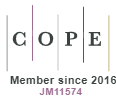Implementation of a leisure reintegration programme for people with acquired brain injury in a community rehabilitation programme: a feasibility study
Serena Alves-Stein A B C * , Stacey George
A B C * , Stacey George  C , Natasha A. Lannin
C , Natasha A. Lannin  A B and Laura Jolliffe
A B and Laura Jolliffe  A B
A B
A
B
C College of Nursing and Health Sciences,
Abstract
Participation in leisure activities is significantly impacted following acquired brain injury (ABI). Despite this being a common community rehabilitation goal, re-engagement with leisure activities following ABI is poorly addressed within Australian community rehabilitation services, which often cater to a mixed-diagnostic group of both ABI and non-ABI clients.
To evaluate the feasibility and effect of a leisure reintegration group programme within a community rehabilitation service.
A single-site, pre- and post-test feasibility study was conducted. Three cohorts of a semi-structured leisure group programme were offered, each conducted over eight sessions within 4 weeks. The Nottingham Leisure Questionnaire (NLQ) and Leisure Satisfaction Measure (LSM) were used as primary outcome measures. Measures of acceptability, including adherence, and a post-intervention participant survey were also completed.
Of the 14 consenting participants, 9 completed all outcome measures. Mean change score for the NLQ was −3.63 (p = 0.11) and the LSM 4.25 (p = 0.46). The programme was well attended (79%), acceptable for ABI and non-ABI participants and able to be implemented within an existing community rehabilitation service.
Providing a leisure reintegration group programme met an identified need, developed client and carer capacity and could be delivered within a community rehabilitation service for clients with mixed diagnoses including ABI. A larger trial is warranted to examine the effectiveness and cost-effectiveness of this intervention for people with ABI.
Keywords: Rehabilitation, leisure, occupational therapy, community integration, brain injury.
References
Australian Institute of Health and Welfare (2007). Disability in Australia: Acquired brain injury. Bulletin no. 55. Retrieved from https://www.aihw.gov.au/getmedia/1f719b27-6b93-434a-b0e6-997b4ead061a/bulletin55.pdf.aspx?inline=true
Beard J. G., Ragheb M. G. (1980) Measuring leisure satisfaction. Journal of Leisure Research 12(1), 20-33.
| Google Scholar |
Bowen D. J., Kreuter M., Spring B., Cofta-Woerpel L., Linnan L., Weiner D., et al. (2009) How we design feasibility studies. American Journal of Preventive Medicine 36(5), 452-457.
| Crossref | Google Scholar |
Desrosiers J., Noreau L., Rochette A., Carbonneau H., Fontaine L., Viscogliosi C., Bravo G. (2007) Effect of a home leisure education program after stroke: A randomized controlled trial. Archives of Physical Medicine and Rehabilitation 88(9), 1095-1100.
| Google Scholar |
Detsky A. S., Laupacis A. (2007) Relevance of cost-effectiveness analysis to clinicians and policy makers. Journal of the American Medical Association 298(2), 221-224.
| Google Scholar |
Drummond A., Parker C., Gladman J., Logan P. (2001) Development and validation of the Nottingham Leisure Questionnaire (NLQ). Clinical Rehabilitation 15(6), 647-656.
| Google Scholar |
Fleming J., Braithwaite H., Gustafsson L., Griffin J., Collier A., Fletcher S. (2011) Participation in leisure activities during brain injury rehabilitation. Brain Injury 25(9), 806-818.
| Google Scholar |
Geurtsen G., Martina J., Van Heugten C., Geurts A. (2008) A prospective study to evaluate a new residential community reintegration programme for severe chronic brain injury: The brain integration programme. Brain Injury 22(7-8), 545-554.
| Google Scholar |
Kuipers P., Foster M., Carlson G., Moy J. (2003) Classifying client goals in community-based ABI rehabilitation: A taxonomy for profiling service delivery and conceptualizing outcomes. Disability and Rehabilitation 25(3), 154-162.
| Google Scholar |
McCabe P., Lippert C., Weiser M., Hilditch M., Hartridge C., Villamere J. (2007) Community reintegration following acquired brain injury. Brain Injury 21(2), 231-257.
| Google Scholar |
McColl M. A., Carlson P., Johnston J., Minnes P., Shue K., Davies D., Karlovits T. (1998) The definition of community integration: Perspectives of people with brain injuries. Brain Injury 12(1), 15-30.
| Crossref | Google Scholar |
McLean A., Jarus T., Hubley A., Jongbloed L. (2014) Associations between social participation and subjective quality of life for adults with moderate to severe traumatic brain injury. Disability and Rehabilitation 36(17), 1409-1418.
| Google Scholar |
Mitchell E., Veitch C., Passey M. (2014) Efficacy of leisure intervention groups in rehabilitation of people with an acquired brain injury. Disability and Rehabilitation 36(17), 1474-1482.
| Google Scholar |
National Health and Medical Research Council. (2007, updated 2015). The National Statement on Ethical Conduct in Human Research. Retrieved from https://www.nhmrc.gov.au/about-us/publications/national-statement-ethical-conduct-human-research#block-views-block-file-attachments-content-block-1.
Sandhaug M., Andelic N., Langhammer B., Mygland A. (2015) Community integration 2 years after moderate and severe traumatic brain injury. Brain Injury 29(7-8), 915-920.
| Google Scholar |
Shaikh N. M., Kersten P., Siegert R. J., Theadom A. (2019) Developing a comprehensive framework of community integration for people with acquired brain injury: A conceptual analysis. Disability and Rehabilitation 41(14), 1615-1631.
| Crossref | Google Scholar |
Tate R., Wakim D., Genders M. (2014) A systematic review of the efficacy of community-based, leisure/social activity programmes for people with traumatic brain injury. Brain Impairment 15(3), 157-176.
| Google Scholar |
Turner-Stokes L., Pick A., Disler P. B., Wade D. T. (2015) Multi-disciplinary rehabilitation for acquired brain injury in adults of working age. Cochrane database of systematic reviews 12, CD004170.
| Crossref | Google Scholar |
Wise E. K., Mathews-Dalton C., Dikmen S., Temkin N., Machamer J., Bell K., Powell J. M. (2010) Impact of traumatic brain injury on participation in leisure activities. Archives of Physical Medicine and Rehabilitation 91(9), 1357-1362.
| Google Scholar |
World Health Organization, UNESCO, International Labour Organization, & International Disability Development Consortium (2010). Community-based rehabilitation: CBR guidelines. Retrieved from https://apps.who.int/iris/handle/10665/4440


